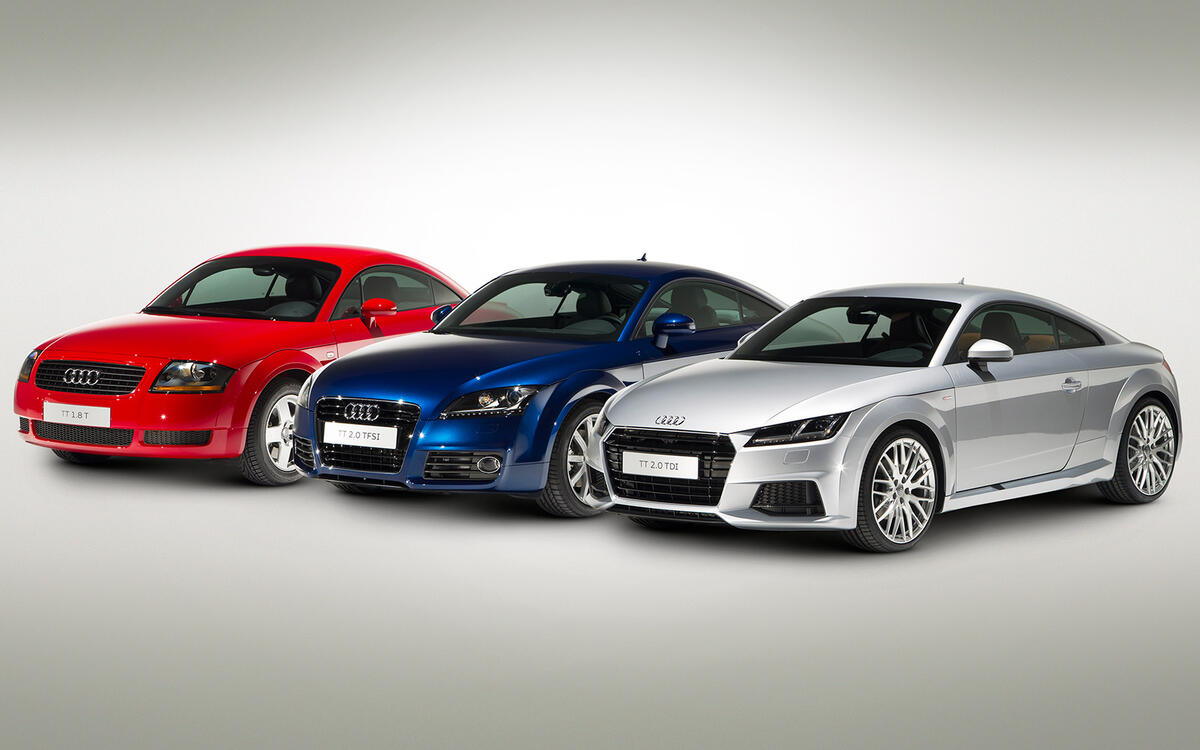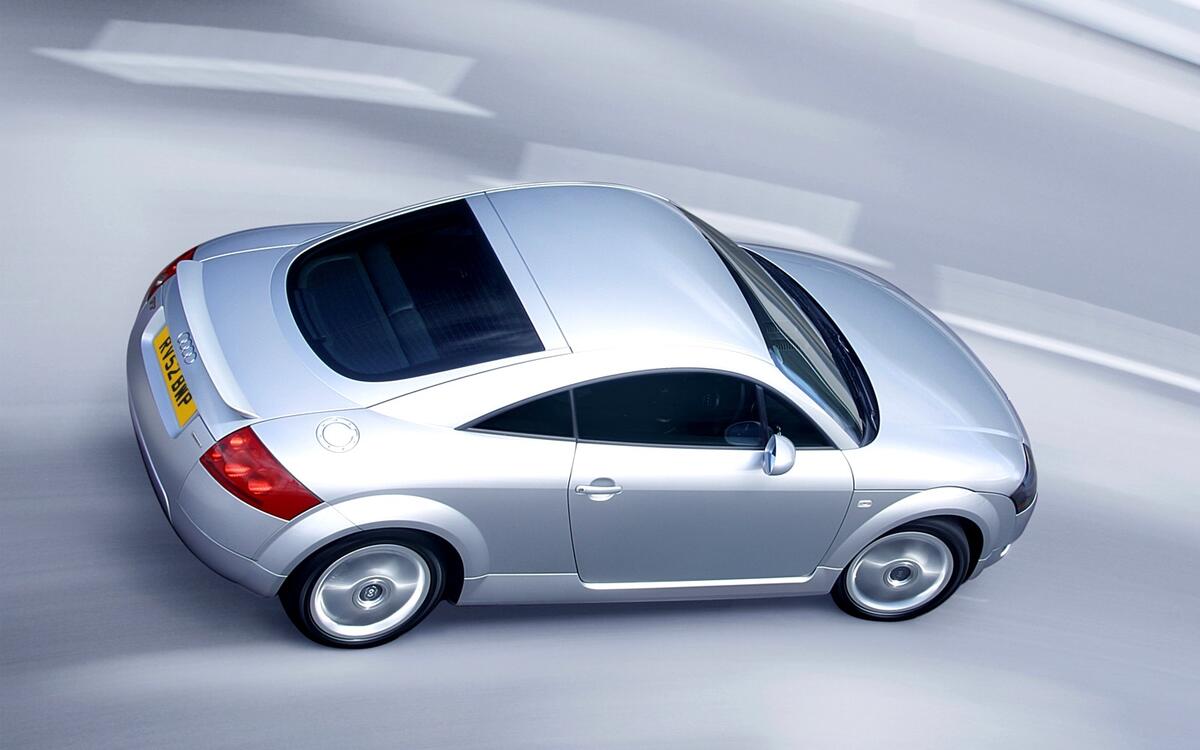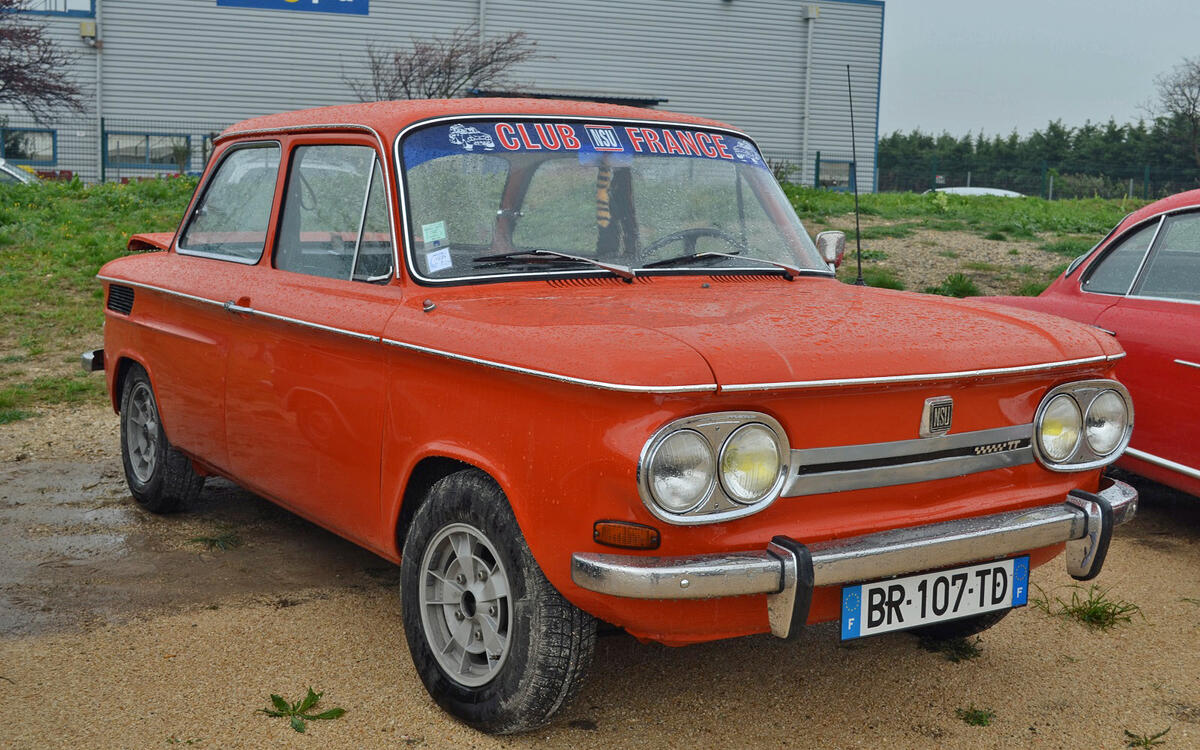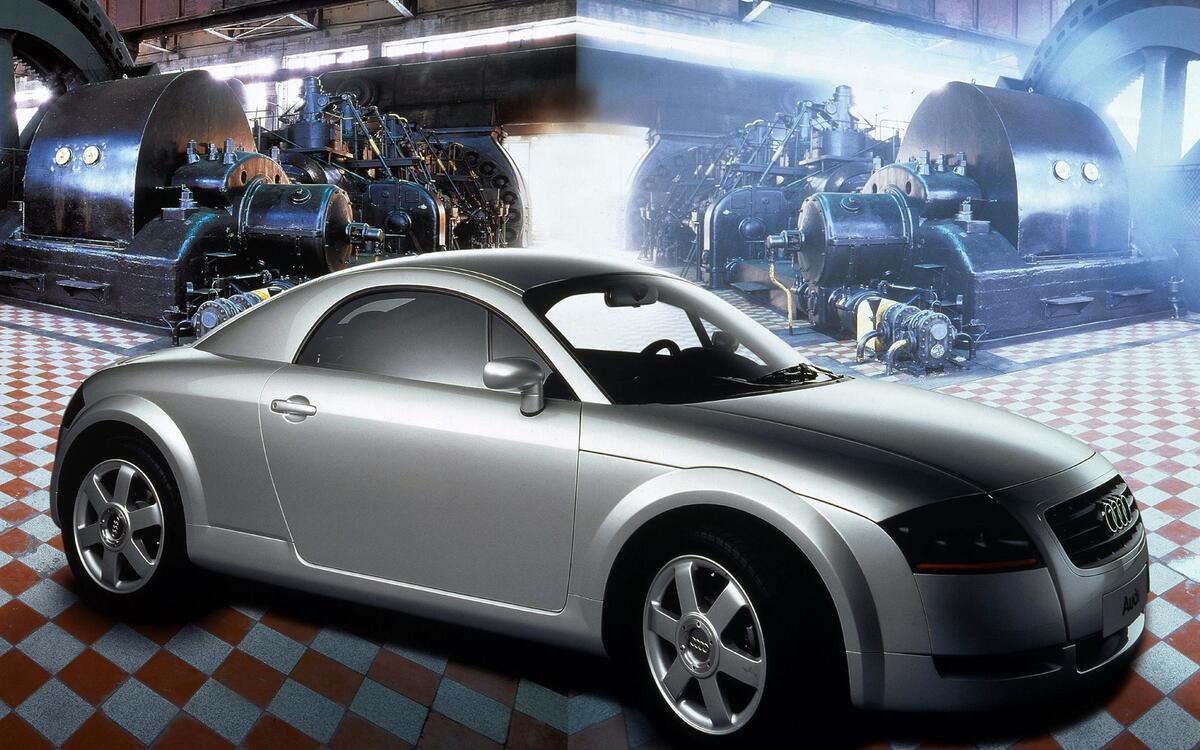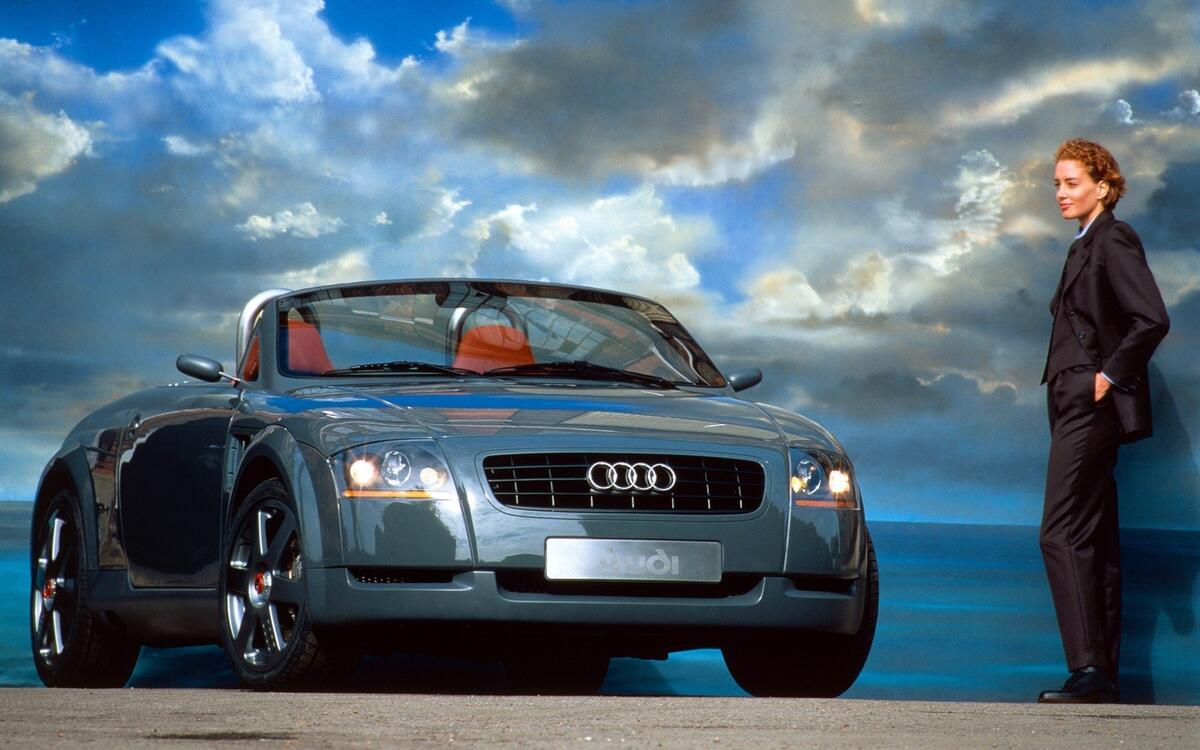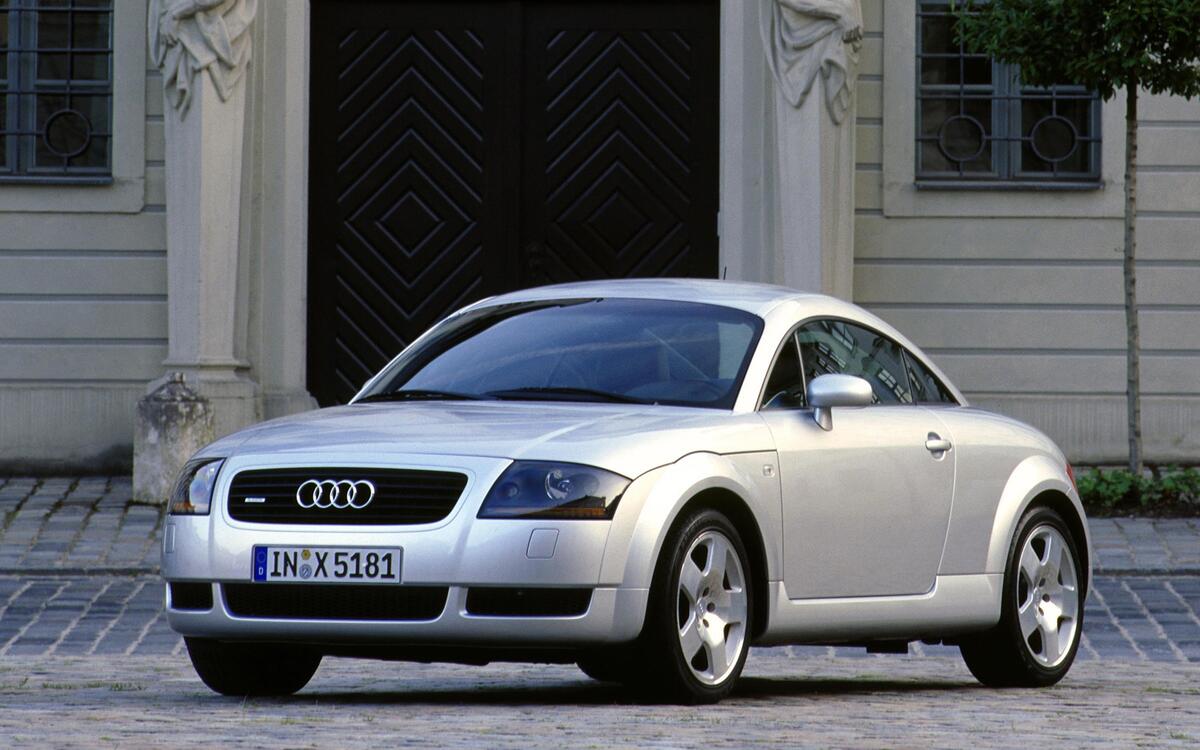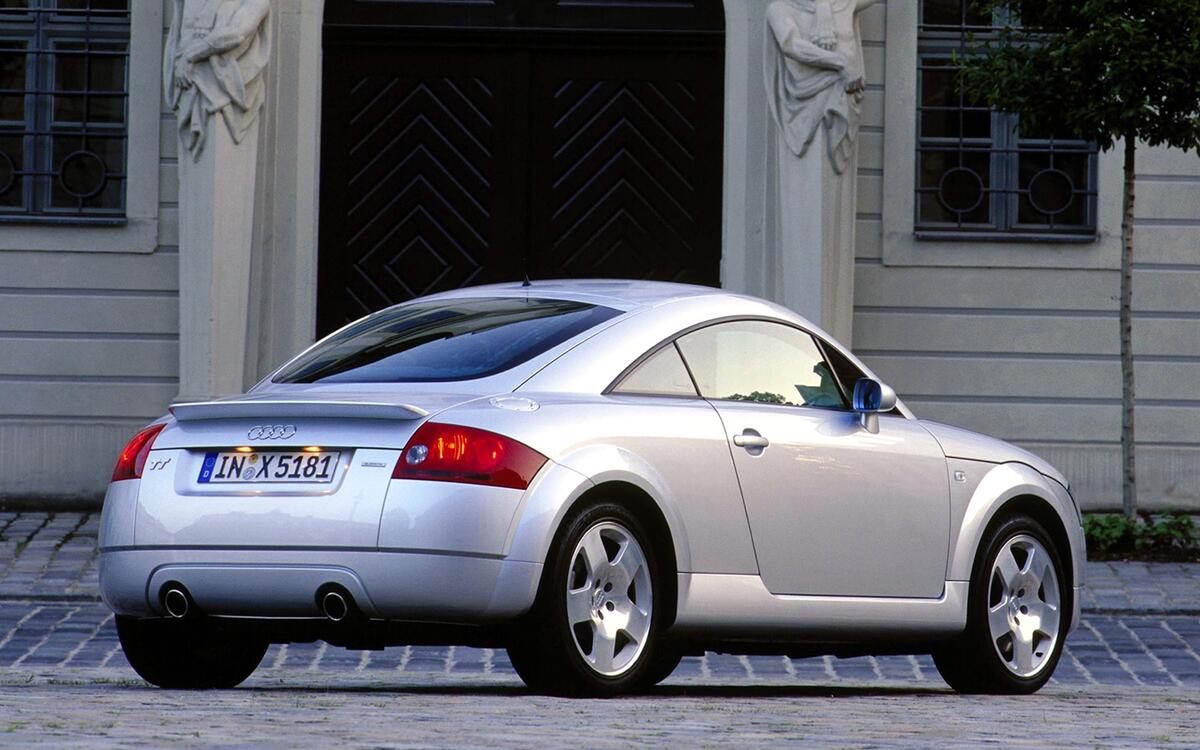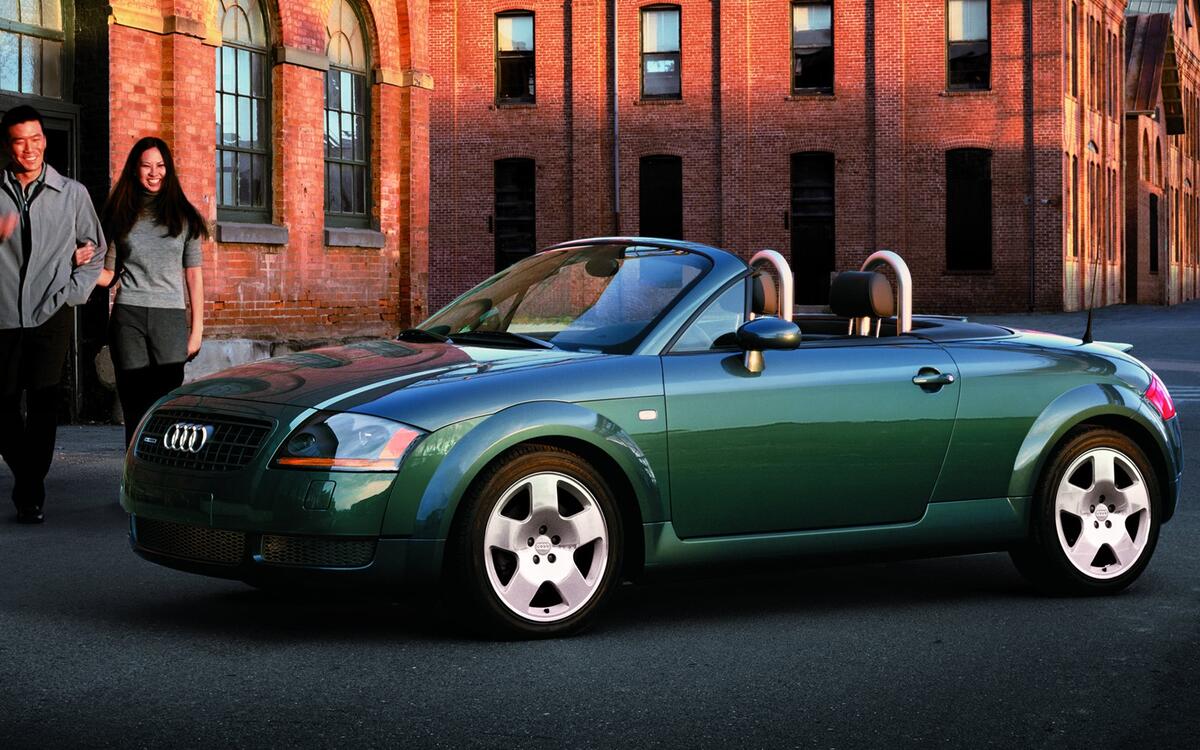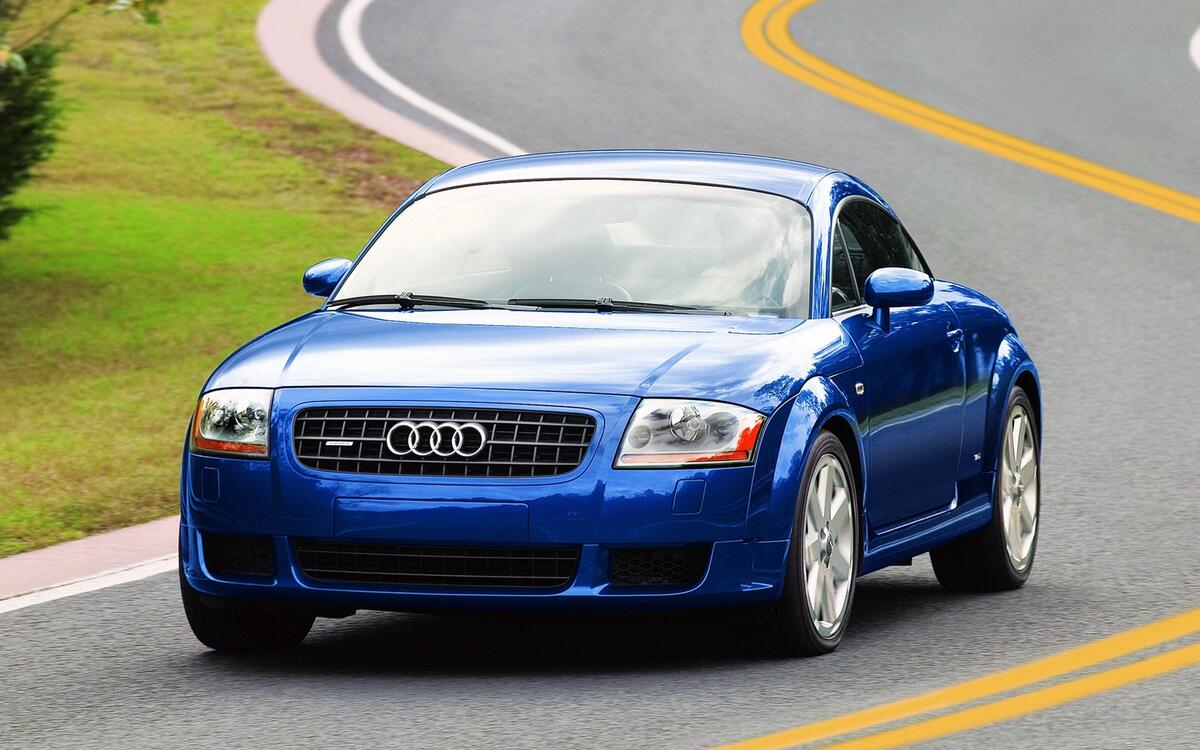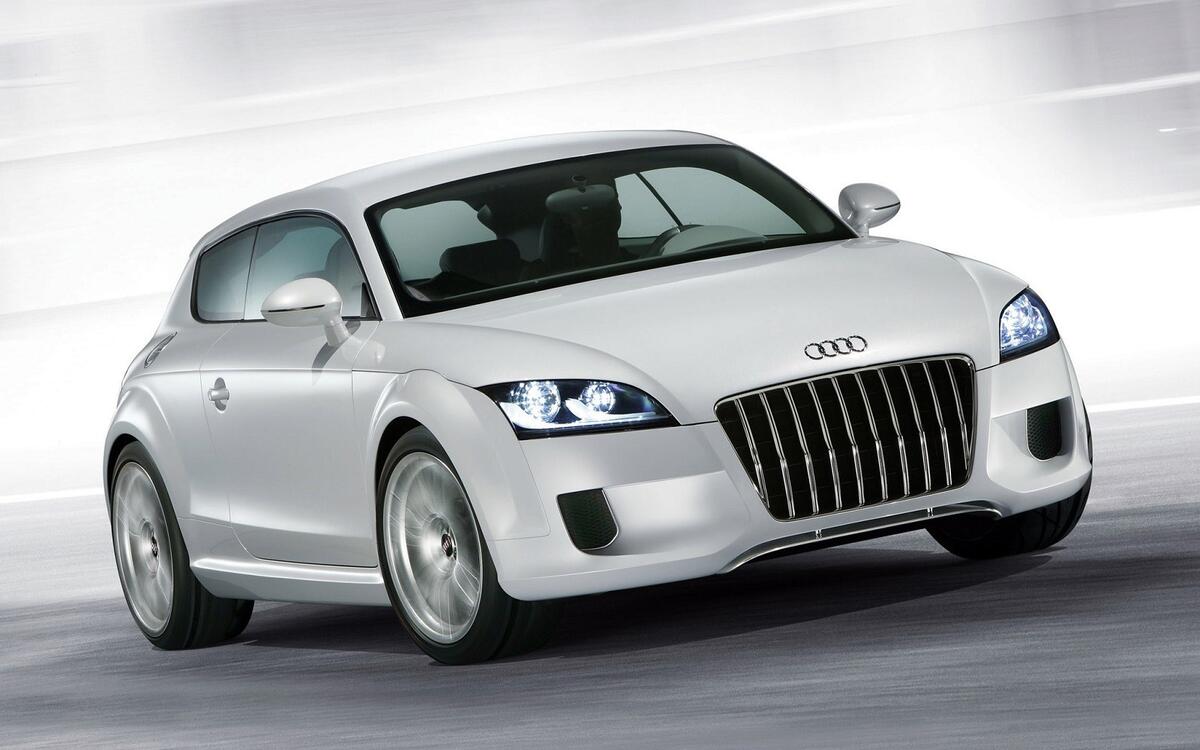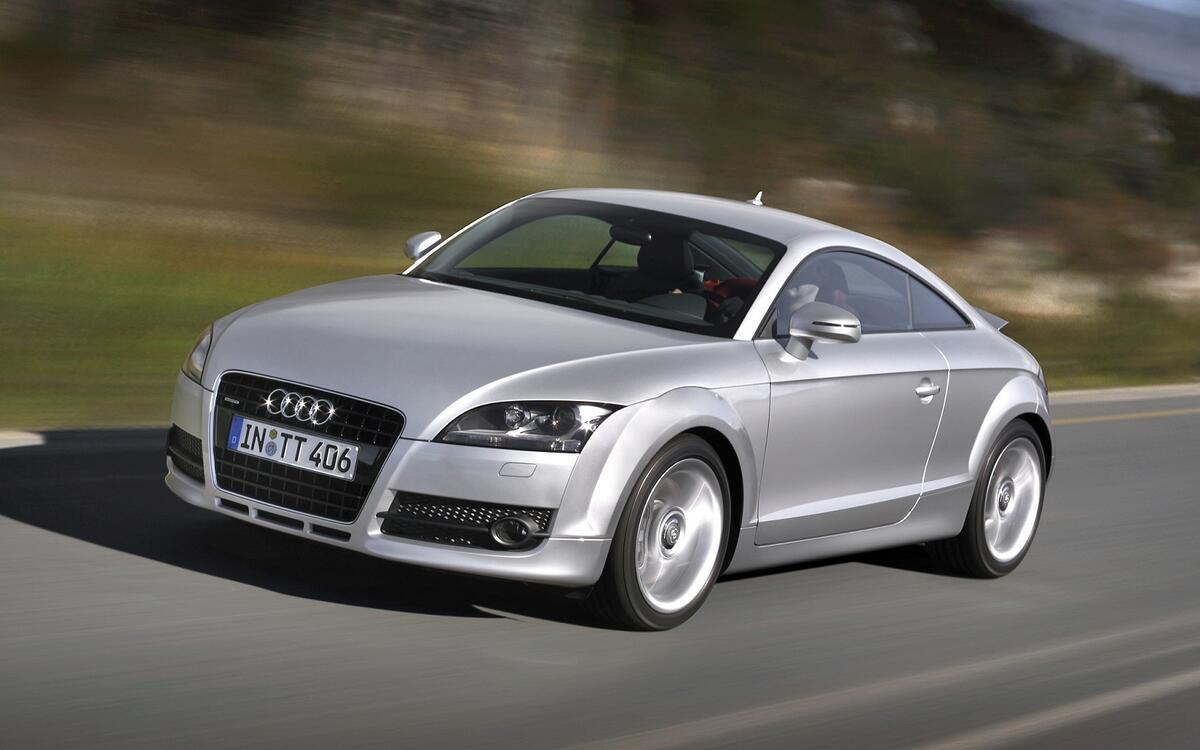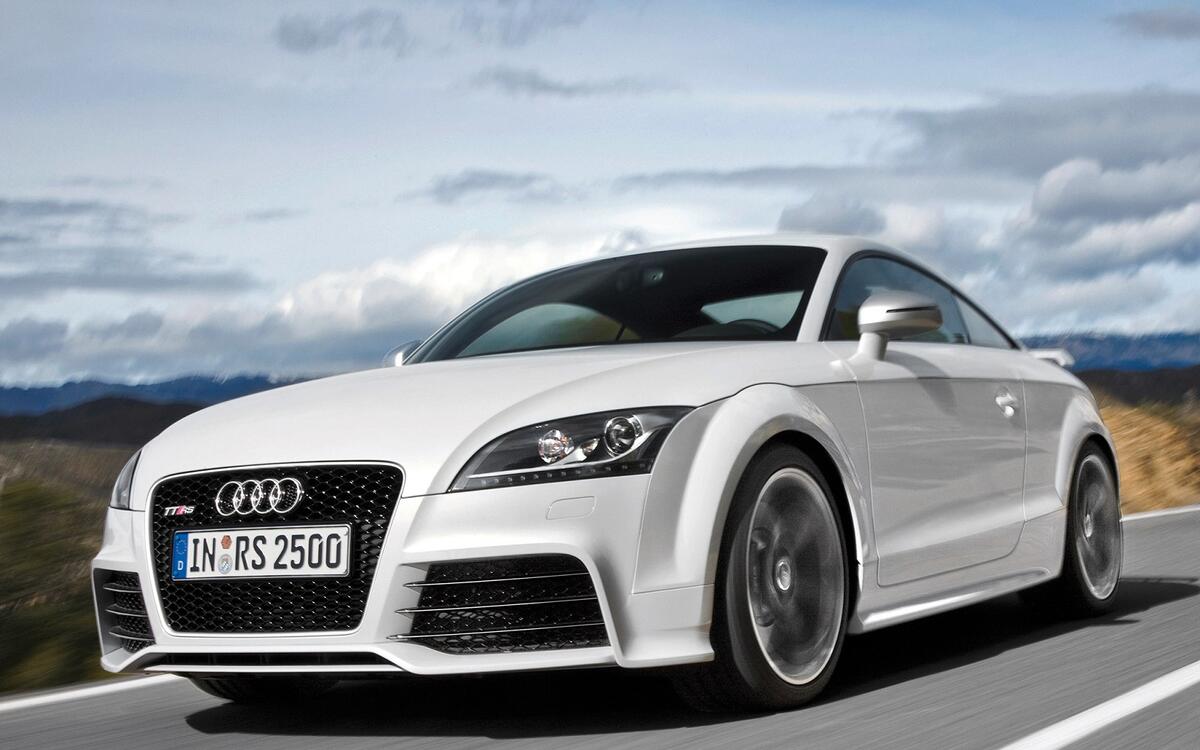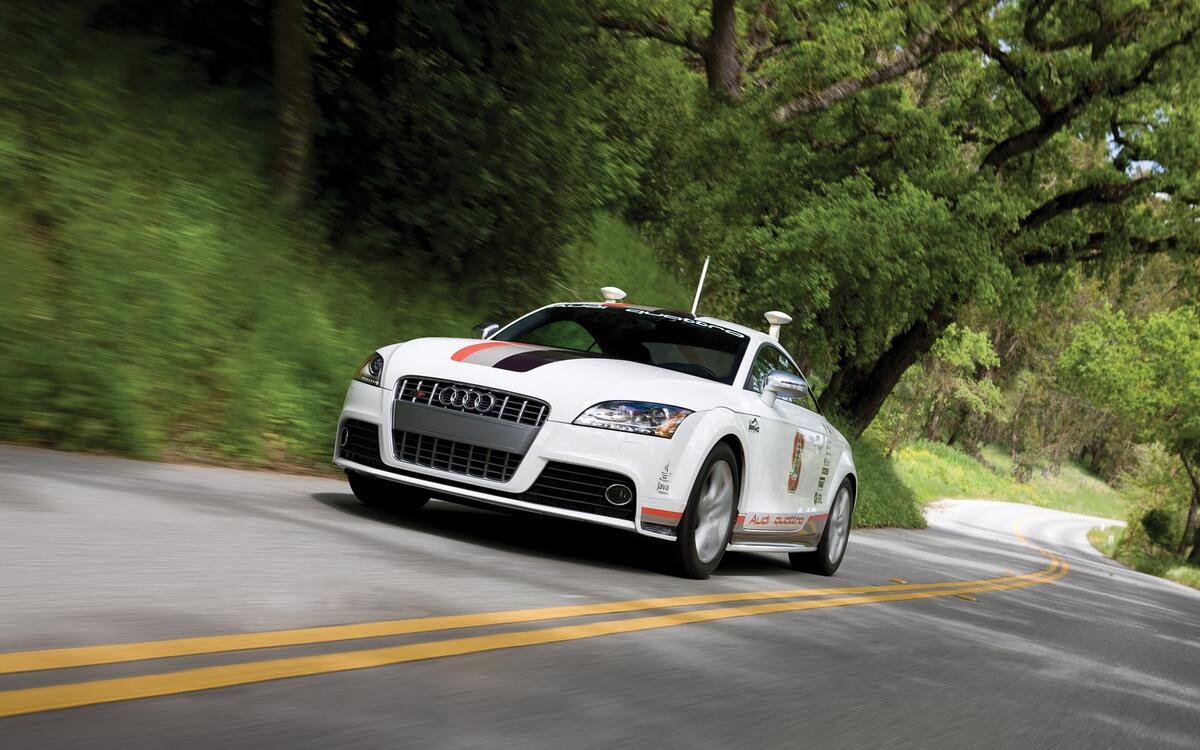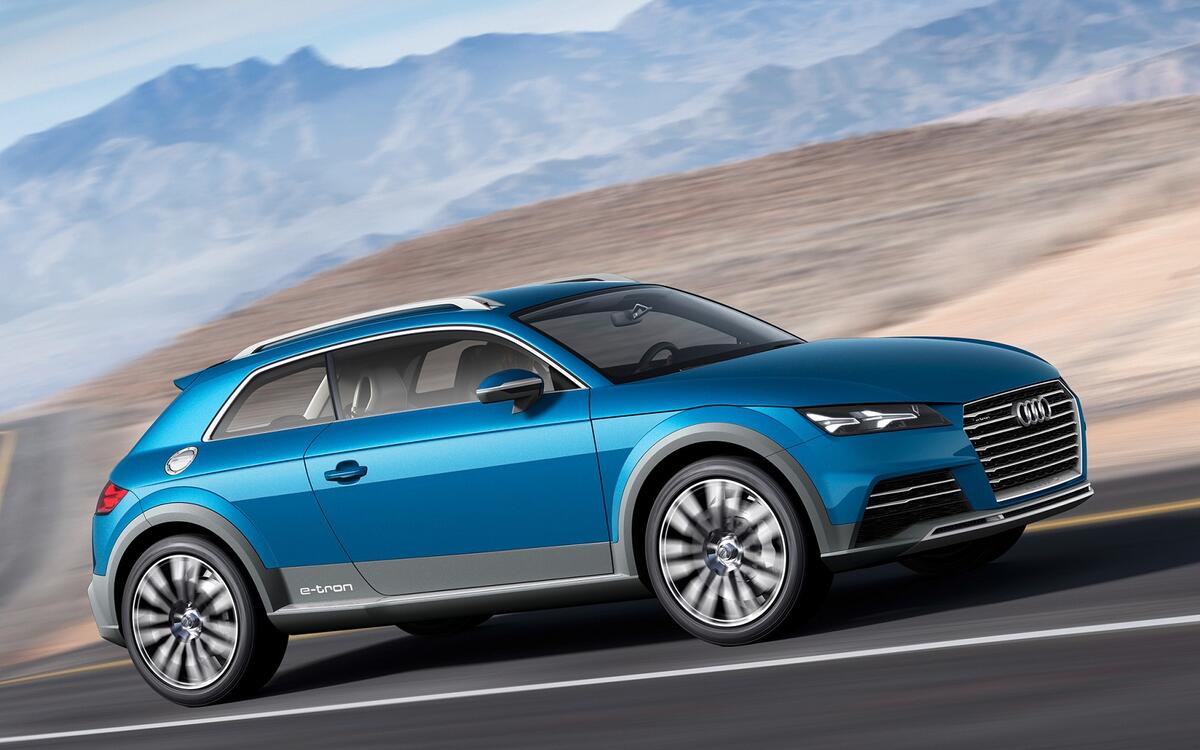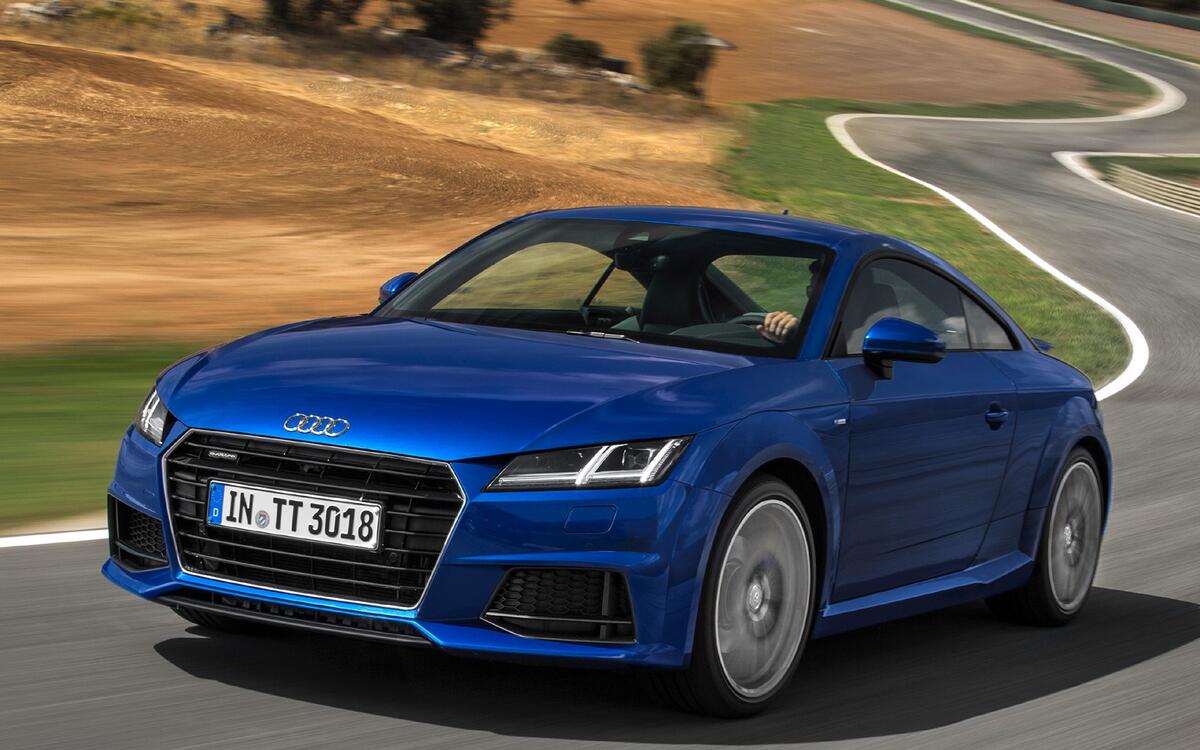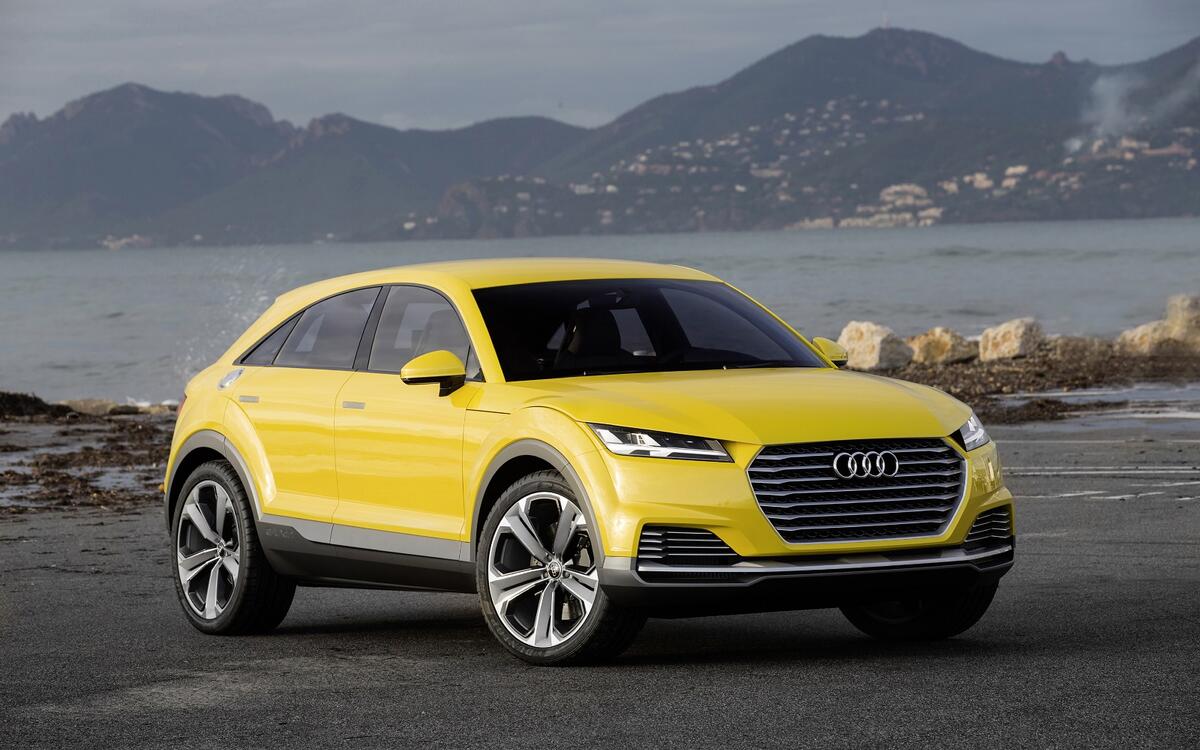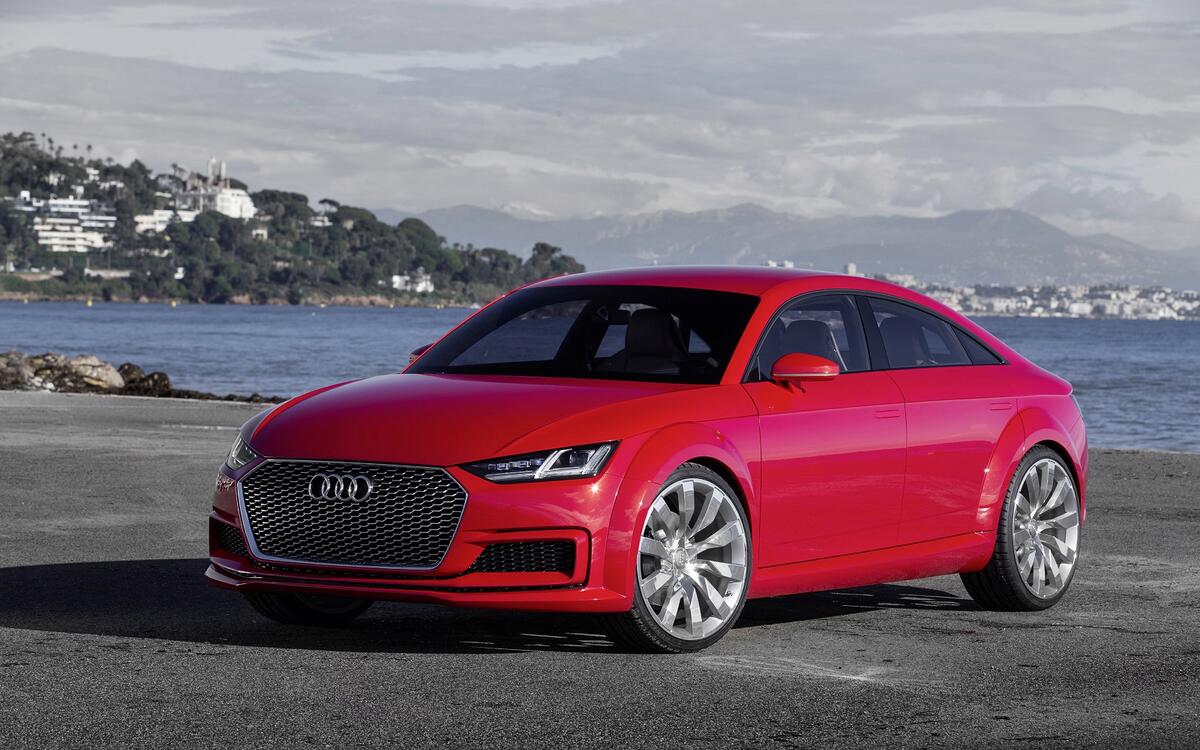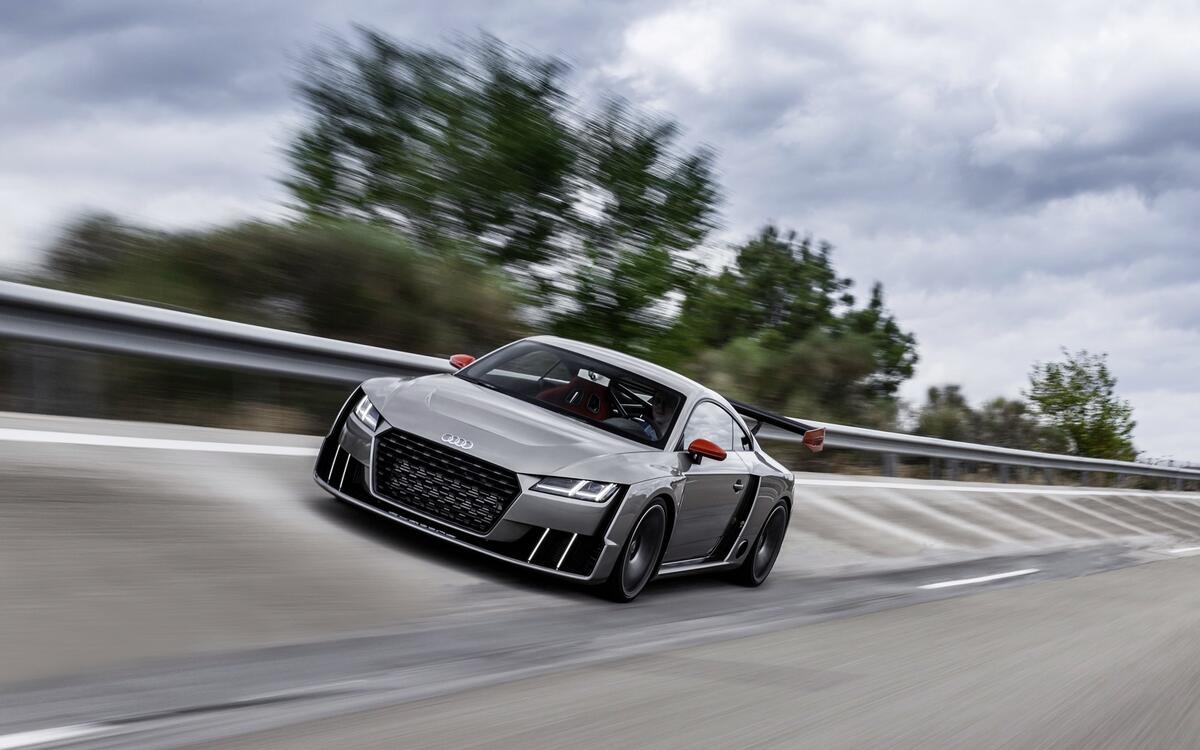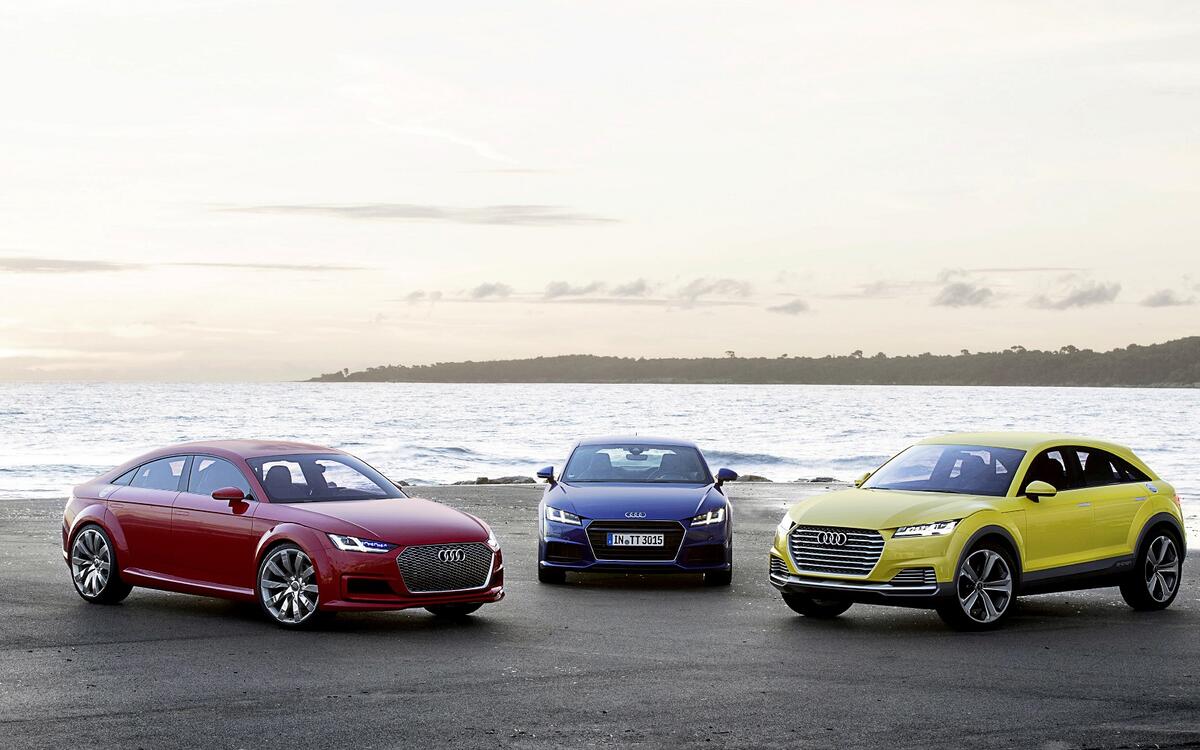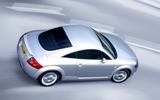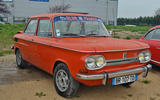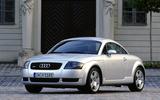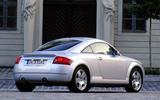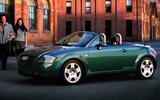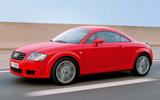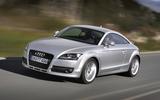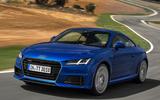 Slide of
Slide of
The original Audi TT shook the automotive industry like an earthquake.
It looked good, it drove reasonably well and it came with a budget-friendly price tag. 20 years and three generations later, the current TT stays true to the first model’s spirit in every aspect. It remains one of Audi’s icons.
 Slide of
Slide of
Origins
Audi made coupes before, including the shapely 100 Coupe S whose roof line inspired the original A7 and the rally-dominating Quattro, but the TT had no direct predecessor in the company’s line-up. It was the first of its kind. The design team was unfettered by tradition; it was creating it.
‘The requirement specifications laid down a sports car concept with high practicality,’ remembered Ulrich Hackenberg, a current Audi board member who supervised the TT’s development process. He added the guidelines called for an interior with ‘as much as necessary and as little as possible.’
 Slide of
Slide of
What’s in a name?
Twin-turbocharged? Time trial? Table top scale? Türk Telekom? Not quite.
NSU, one of the companies that merged to form Audi as we know it, won the Tourist Trophy (TT) on the Isle of Man in the early 1950s. It celebrated its victory by introducing a sporty moped named Quickly TT in 1959. It launched the Prinz 1000 TT (pictured), a rear-engined economy car-turned-sports car, six years later. The Prinz TT later spawned an even hotter model named TTS developed for competition.
 Slide of
Slide of
TT Coupe concept (1995)
Freeman Thomas and J Mays penned the original TT in 1994 while working at Audi’s Santa Monica design studio in California. They envisioned a coupe with crisp, Bauhaus-inspired lines built on the same platform as the then-upcoming A3. Sharing components between model lines would cut development costs and make the TT accessible to a wider audience. The idea was never to create a high-end model with a correspondingly astronomical price tag.
Their vision became a reality when Audi unveiled the TT Coupe concept at the 1995 Frankfurt motor show. Presented as simply a design study, the concept turned every head on the show floor.
 Slide of
Slide of
TTS Roadster concept (1995)
Introduced at the 1995 Tokyo Motor Show, the TTS Roadster concept illustrated two ways to expand the TT family. It took the form of a convertible equipped with a fixed roll bar for each passenger. Instead of fitting a conventional power-folding soft top, Audi gave the Roadster a piece of fabric designed to be stretched over the passenger compartment like a tent.
The S in the name hinted the TT packed a more powerful punch under the bonnet. It received a turbocharged 1.8-litre engine rated at 210bhp. Baseball mitts provided inspiration for the shape of the seats and the thick accent stitching on their outer edges. The concept was again well received, so Audi began the process of turning the TT into a production model.
 Slide of
Slide of
The original TT (1998)
Audi released the first-generation TT at the 1998 Paris Motor Show. The coupe’s basic design made the transition from a show car to a production car with only minor modifications, including the addition of rear side windows directly behind the doors. The overall styling – and, significantly, the gorgeous proportions – remained essentially unchanged.
With the TT, Audi caught everyone by surprise, especially its rivals. No one thought it would build the concept. Mercedes had the SLK, which could be transformed into a coupe thanks to a power-operated folding hard top, but it wasn’t as stylish or as exciting as the TT and it cost appreciably more.
 Slide of
Slide of
By the numbers
In America, the base TT joined the Audi line-up in time for the 2000 model year with a 1.8-litre four-cylinder engine turbocharged to make 180hp and 173lb ft of torque. Front-wheel drive came standard, and Audi’s quattro all-wheel drive system was available at an extra cost. Pricing in America started at $30,500 (about $44,000/£31,000 today) and £20,000 in Britain for the front-wheel drive model, a figure that made it over $10,000 cheaper than the Mercedes-Benz SLK.
 Slide of
Slide of
The TT loses its lid (1999)
Audi added a convertible model to the TT line-up at the 1999 Geneva motor show. Again, it remained remarkably close to the show car unveiled in Tokyo four years earlier. Going straight from concept to production has become par for the course today. Concepts are often little more than overly futuristic-looking production models with cameras in lieu of mirrors and oversized wheels. That wasn’t the case 20 years ago. Audi’s move was a bold one.
 Slide of
Slide of
Spoiler alert (1999)
The original TT’s lustre temporarily faded in the wake of an unusually high number of high-speed crashes, notably on the German Autobahn. An investigation into the problem revealed the coupe could become unstable as it exceeded triple-digit speeds. Audi fixed the problem by issuing a recall to install a rear spoiler and make suspension tweaks. It later added ESP to the list of extra-cost options.
 Slide of
Slide of
The TT gets a six (2003)
After an abortive effort to place the TT's body onto an Audi RS4 chassis to make a high-performance TT, Audi instead shoe-horned a 3.2-litre VR6 with 250hp on tap into the TT’s engine bay starting in early 2003. It was a derivative of the engine found in the fabulous Volkswagen Golf R32 and even the base version of the original Porsche Cayenne. In the TT, the six-cylinder came only with Audi’s quattro all-wheel drive system.
 Slide of
Slide of
TT Shooting Brake concept (2005)
Audi returned to the Tokyo show in 2005 to introduce the TT Shooting Brake concept. It took the TT in a new, more angular design direction. It also received a longer roof that transformed it into a mini estate. The concept set the media ablaze; would Audi really make the TT a shooting brake?
The concept lingered in production limbo but it ultimately didn’t make the cut. It gave show-goers in Tokyo an unambiguous preview of the second-generation TT, however.
 Slide of
Slide of
The second-generation TT (2006)
Audi introduced the all-new second-generation TT in April of 2006 via a live internet video feed, an unmistakable sign of the changing times. The coupe borrowed more than a handful of styling cues from the Shooting Brake concept so it wasn’t as clean cut as its predecessor. The long, fast-sloping roof line and the pronounced wheel arches remained.
Engineers went to great lengths to make the second-generation TT more engaging to drive. They used aluminium extensively to reduce weight and fitted more powerful engines across the board. The 268hp TTS model made its debut at the 2008 Detroit motor show. Across the pond, Audi dropped a four-cylinder turbodiesel in the TT for the first time that same year.
 Slide of
Slide of
The tuner’s TT (2007)
Tuning enthusiast who trekked out to the 2007 edition of the annual Wörthersee show saw the most aggressive-looking TT to date. The Clubsport Quattro concept drew inspiration from the Porsche 356 Speedster, albeit with a Fast & Furious-like twist. It had no top and a short windshield that wrapped around the passenger compartment, eliminating the need for an A-pillar. Audi also redesigned the front end, shaved the door handles and fitted a full body kit.
 Slide of
Slide of
RS vs. AMG vs. M (2009)
Audi’s high-performance Quattro division finally got to build its own version of the TT. Named TT RS, it broke cover at the 2009 Geneva auto show with a big surprise under the bonnet. It marked the welcomed return of a five-cylinder engine to the Audi line-up after a long hiatus.
The 2.5-litre turbocharged five made 335hp, an output it transferred to the pavement through a close-ratio six-speed manual transmission and, of course, Quattro all-wheel drive. Brake and suspension upgrades kept the additional power in check. The RS treatment finally let the TT rub elbows with coupes built by the likes of Mercedes-AMG and BMW-M.
 Slide of
Slide of
The driver-less sports car (2010)
By nature, sports cars will (hopefully) retain a steering wheel for as long as possible. That doesn’t mean they can’t drive themselves, though. Audi built an autonomous TTS decked out with enough computing power to run a Maersk container ship and sent it to tackle the gruelling Pikes Peak Hill Climb in Colorado without a driver behind the wheel. It took 27 minutes to complete the course, about 10 minutes more than a professional race car driver behind the wheel of a similar car.
 Slide of
Slide of
Allroad Shooting Brake concept (2014)
Audi set sail for the 2014 Detroit motor show with a new concept named Allroad Shooting Brake in tow. It looked like a carefully updated version of the 2005 design study but there was a significant turn in the plot. Like its name implied, the Allroad Shooting Brake surfed the SUV wave. Audi raised the ground clearance and added rugged-looking styling cues like plastic trim over the wheel arches.
Again, rumours and industry whisperings claimed the concept would morph into a production model sooner rather than later. That hasn’t happened yet, and we’ll probably never see a TT shooting brake, but the Allroad-badged concept wasn’t entirely hypothetical. From hindsight, and this might give you déjà vu, it accurately previewed the next TT which arrived a few short months later.
 Slide of
Slide of
The third-generation TT (2014)
Audi introduced the third-generation TT at the 2014 Geneva motor show. It still looked like a TT, there were no surprises in that department, but it got back much of the crispness and purity that made the original model a design home run inside and out.
The sheet metal hid the modular MQB platform that continues to underpin a dizzying array of cars built by the Volkswagen Group. Audi upped the TT’s tech quotient by adding features like a virtual cockpit, a driver-configurable high-resolution screen that replaces the analogue instrument cluster.
 Slide of
Slide of
TT Offroad concept (2014)
Exploring the TT’s boundaries inevitably led Audi to the land of SUVs. While some worried the company had taken leave of its senses, the move made sense. SUVs reigned supreme, especially on the ultra-lucrative Chinese market, and Audi sought a way to surf the wave.
The TT Offroad concept unveiled at the 2014 Beijing show borrowed a handful of styling cues from the third-generation TT, including some front-end features and the pronounced wheel arches. If built, it could have beat the BMW X4 and the Mercedes-Benz GLC Coupe to the market.
 Slide of
Slide of
TT Sportback concept (2014)
2014 was the year of the TT, and Audi ended it on a high note. It displayed yet another design study at that year’s Paris auto show. Named TT Sportback, this one illustrated what a family-friendly TT with a longer wheelbase and four doors might look like. Designers performed the conversion without losing a crumb of the TT’s sporty ethos. The result was stunning. Many speculated it would reach production, too. It certainly looked ready for prime time.
 Slide of
Slide of
TT Clubsport Turbo concept (2015)
In 2015, Audi pushed the TT towards supercar territory with the Clubsport Turbo concept. The design study drew inspiration from the 90 IMSA GTO that lit up race tracks in the late 1980s. It received a body kit that included flared fenders, vents chiselled into the front end and a huge wing out back.
Its 2.5-litre five-cylinder made 600hp and it relied on an electric compressor, a state-of-the-art bit of technology, to deliver instantaneous acceleration with no turbo lag. Audi development boss Ulrich Hackenberg noted the technology was close to production. We’ve seen it on the SQ7 TDI but it has yet to seep down into the TT.
 Slide of
Slide of
What’s next?
Peter Oberndorfer, Audi’s head of product and technology communications, told Autocar there are currently no plans to bring any of the TT off-shoots shown in 2014 to production. Asked about expanding the TT line-up, he replied ‘it was an idea then, but maybe it doesn’t fit into the portfolio anymore.’ ‘We have a lot of ideas but not exactly the ones you saw [in 2014],’ he told us on the sidelines of the 2018 Geneva auto show.
The car that took Audi in a new direction
Advertisement


